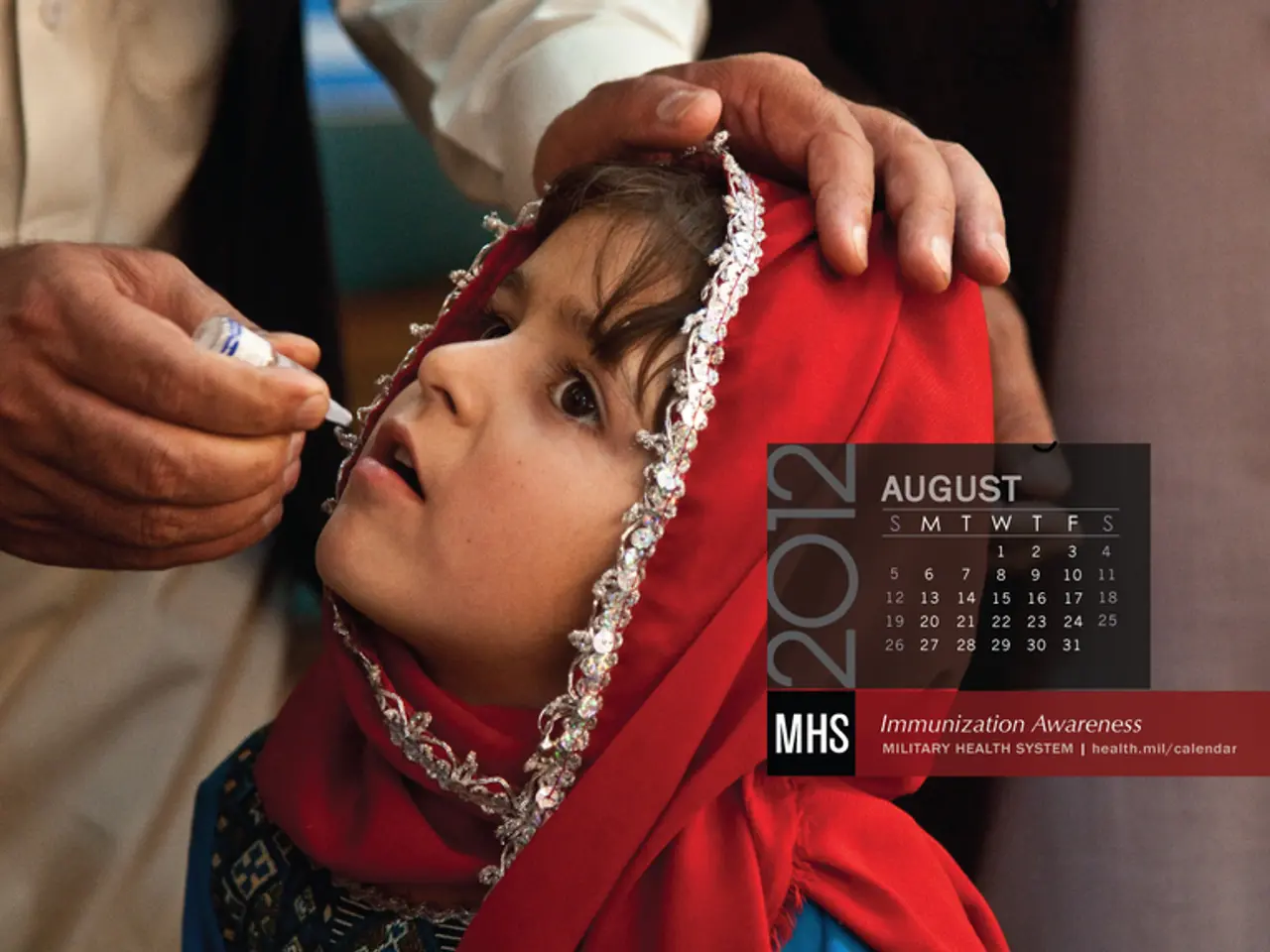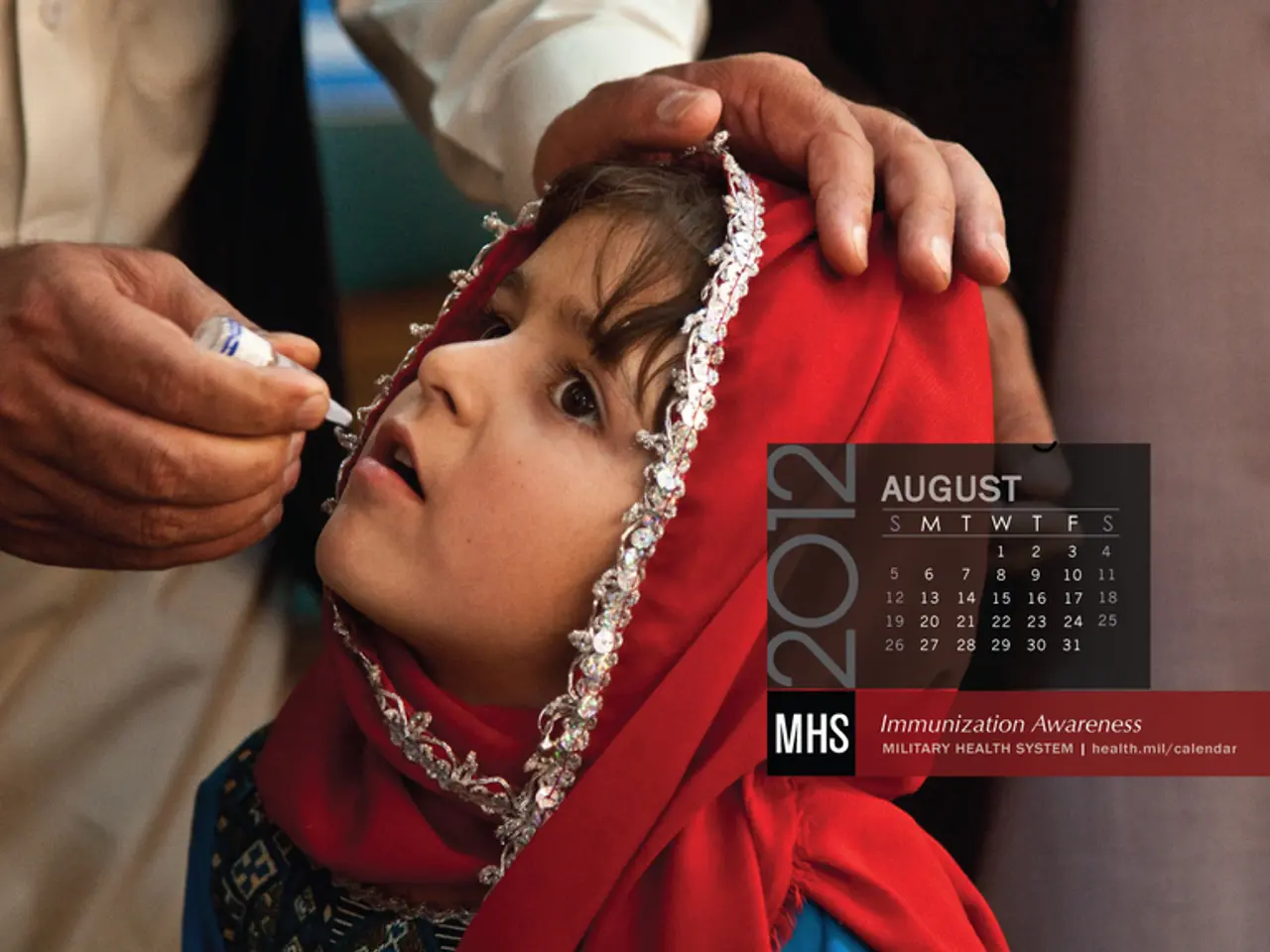Advancing a Successful Norovirus Immunization: Current Milestones and Future Horizons
In the ongoing battle against norovirus, a common cause of stomach bugs, progress has been made, but significant hurdles remain. As of mid-2025, there are no approved norovirus vaccines or antivirals available in the U.S. [1]
One promising development comes from Cocrystal Pharma, which has created a first-in-class antiviral drug candidate called CDI-988. This pan-viral protease inhibitor targets conserved viral regions across multiple norovirus strains, such as GII.4 and GII.17. [1][2] The dual potential activity against noroviruses and certain coronaviruses could increase its clinical and commercial value. CDI-988 has completed a Phase 1 clinical trial, establishing preliminary safety and pharmacokinetics. [1][2] However, it is still in the early stages—Phase 1 trials do not demonstrate efficacy, and several years of additional trials are needed before it might reach approval and widespread use.
The vaccine development landscape is fraught with challenges due to norovirus's high genetic variability and rapid mutation rate. [2] This diversity complicates the creation of broadly effective vaccines. Despite these difficulties, scientists continue to explore various strategies, including the use of mRNA technology for a more adaptable and efficient approach to combat the virus's changing strains. [3]
In the absence of a suitable animal model for norovirus, researchers must rely on innovative approaches to advance vaccine candidates through clinical trials. [4] Ongoing clinical trials are exploring various vaccine candidates that target the primary surface protein of norovirus. [4] Another strategy utilizes mRNA technology to deliver genetic information that triggers an immune response against norovirus. [3]
The development of an effective norovirus vaccine is crucial for safeguarding public health and reducing the burden of this pervasive infection. Norovirus thrives in environments like cruise ships and cafeterias, spreading rapidly and causing symptoms such as diarrhea, vomiting, nausea, and stomach pain. [5] Targeted vaccination efforts aimed at high-risk populations, such as older adults and those with compromised immune systems, could help minimize the impact of norovirus outbreaks during peak seasons. [6]
Seven candidates for a norovirus vaccine are in clinical trials, but none have yet met the mark for approval in the U.S. [7] The prospect of a norovirus vaccine becoming available in the near future is a distinct possibility, offering hope for a future where the nightmare of norovirus may be a thing of the past. [8] However, it is essential to remain cautious and recognise that the road to a successful norovirus vaccine is still long and filled with challenges.
References: 1. Norovirus Vaccines: Current Status and Future Directions 2. Norovirus: Challenges in vaccine development 3. mRNA Vaccines for Norovirus: A Promising Approach 4. The Development of Norovirus Vaccines: Current Status and Challenges 5. Norovirus: Transmission, Epidemiology, and Control 6. Targeted vaccination strategies for norovirus 7. Clinical Trials for Norovirus Vaccines 8. The Promise of a Norovirus Vaccine
- The ongoing battle against norovirus underscores the importance of advancements in food safety and health.
- The absence of approved antivirals and vaccines for norovirus highlights a significant gap in healthcare and medical conditions.
- CDI-988, a first-in-class antiviral drug candidate, holds potential for both noroviruses and certain respiratory conditions.
- The success of CDI-988 could have implications for the entire environmental science and industry.
- Achieving preliminary safety and pharmacokinetics for CDI-988 sets the stage for further testing and implementations.
- Despite progress, CDI-988 is still in its early stages, requiring multiple years of additional trials before it can be approved and widely used.
- The high genetic variability and rapid mutation rate of norovirus pose significant challenges for health and science.
- Researchers are constantly exploring scientific breakthroughs to combat the ever-changing norovirus strains, such as through mRNA technology.
- Innovative approaches are key to overcoming the challenges posed by the lack of a suitable animal model for norovirus research.
- Ongoing clinical trials focus on vaccine candidates that target the primary surface protein of norovirus.
- Another strategy to develop a norovirus vaccine involves using mRNA technology to deliver genetic information that triggers an immune response.
- An effective norovirus vaccine is essential for the well-being of individuals and the health and wellness of communities.
- Norovirus is often prevalent in workplaces, schools, and other public settings, causing extended absences and lower production.
- Implementing workplace-wellness programs and promoting good hygiene practices can help minimize norovirus outbreaks, reducing the burden on businesses and society.
- The elderly and those with chronic diseases, like cancer, respiratory conditions, and digestive health issues, are particularly vulnerable to norovirus.
- Eye-health, hearing, and skin-care are other areas of health that can be impacted by norovirus, highlighting the interconnectedness of human well-being.
- Mental health can also be affected by the stress and anxiety caused by norovirus outbreaks, calling for a holistic approach to health-and-wellness.
- Fitness-and-exercise, sexual-health, and autoimmune-disorders might not be directly related to norovirus, but their proper management contributes to overall well-being during viral infections.
- Climate change, neurological-disorders, and environmental-science are complex issues with indirect connections to the development of norovirus vaccines.
- As industries evolve, investing in companies like Cocrystal Pharma that work on health-related therapies and treatments is crucial for the growth of the stock market and finance.
- Skin-conditions and aging can exacerbate the impact of norovirus due to the vulnerability of the skin and immune system during the aging process.
- Women's-health and parenting must consider the additional risks and challenges faced by pregnant women and young children when addressing norovirus.
- Weight-management and cardiovascular-health are essential components of a comprehensive support system for those recovering from norovirus.
- The development of an norovirus vaccine is a collaborative effort involving numerous disciplines, including pharmaceutical, cybersecurity, and data and cloud computing.
- Artificial-intelligence and relationship-management can help in analyzing and predicting norovirus outbreaks, ensuring timely responses and mitigation strategies.
- Pets, travel, cars, and books are part of our everyday lives, and understanding how they might contribute to norovirus transmission is vital for an informed lifestyle.
- Social-media and entertainment platforms can play a role in disseminating accurate information about norovirus prevention and management.
- Music and other forms of artistic expression can provide comfort, distraction, and healing during the recovery process from norovirus.
- Lifestyle and fashion-and-beauty choices can impact overall health and vulnerability to norovirus in various ways, highlighting the need for well-informed decision-making.
- Food-and-drink preferences and practices can contribute to norovirus transmission, reinforcing the importance of proper food safety measures and hygiene.




